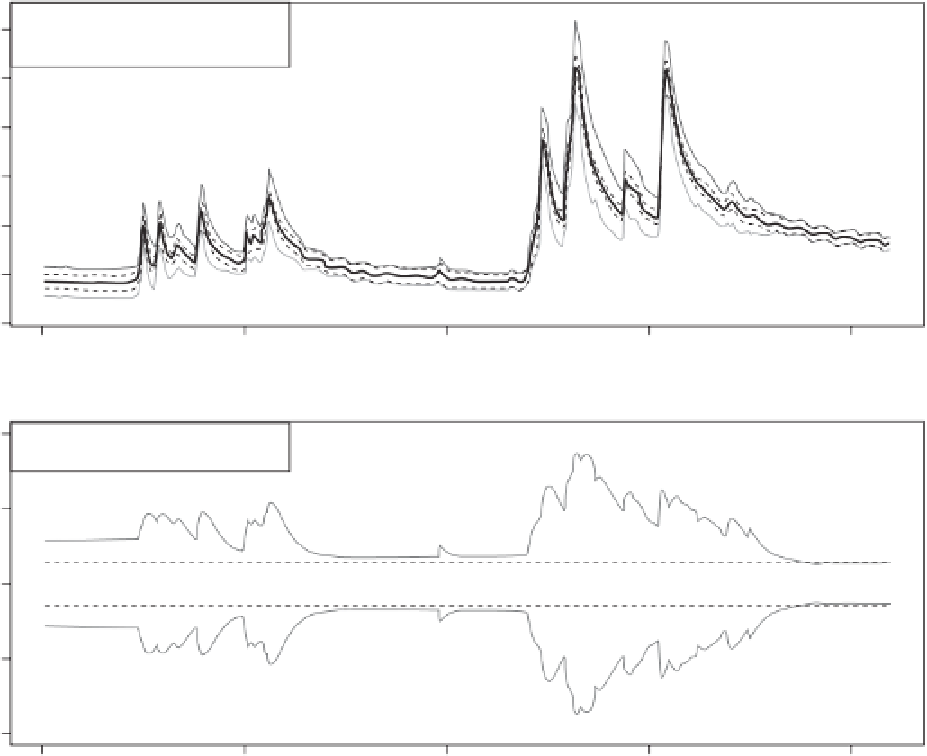Environmental Engineering Reference
In-Depth Information
Observed discharge
Measurement error
Internal model discrepancy
0
200
400
Time in hours
600
800
Measurement error
Internal model discrepancy
0
200
400
Time in hours
600
800
Figure 26.4
The upper panel shows the logarithm of observed discharge, three standard deviation traces of observation error and of
corresponding internal model discrepancy, assessed by perturbing an initial condition, the RAIN forcing function, structural inflow
and parameter outflow. The lower panel shows three-sigma limits for both the internal model discrepancy and the measurement
error.
deviations are the root mean square of the variances of the
four contributions: the initial condition, the RAIN forc-
ing function, structural inflow and parameter outflow.
The calculation in (iii) assumes that these four contribu-
tions are uncorrelated, which was confirmed with further
runs of the model. Note that in Figure 26.4, the inter-
nal model discrepancy is significantly smaller than the
range of discharges explored by the model output and
the observed discharge. This observation suggests that
the model would not be deemed inadequate due to this
level of internal discrepancy. There are many possible fur-
ther internal error contributions, so the internal model
discrepancy based on the four contributions is likely to
underestimate that based on a comprehensive overall
assessment.
26.3.4 Externalmodel discrepancy
We introduce the notion of implausibility as a basis
for assessing the external contribution to overall model
discrepancy. Suppose we observe a system at N equally
spaced time points
t
=
1, 2,
...
, N. In the runoff model,
there are
N
=
839 consecutive hourly discharge mea-
surements for the 35 days between 19
th
August and 22
nd
September 1993. Denote by
zt
a field observation at time
t
. In the runoff model,
z
1
,
z
2
,
,
z
N
are the logarithms of
water discharge at each of the 839 hours. Denote by
f
t
(x)
the model output at time
t
when the model is evaluated at
input
x
. In the runoff model,
f
1
(
x
),
...
,
fN
(
x
) are the 839
logarithms of water discharge simulated by the runoff
model at input
x
, where
x
comprises 18 parameters subject
...








Search WWH ::

Custom Search